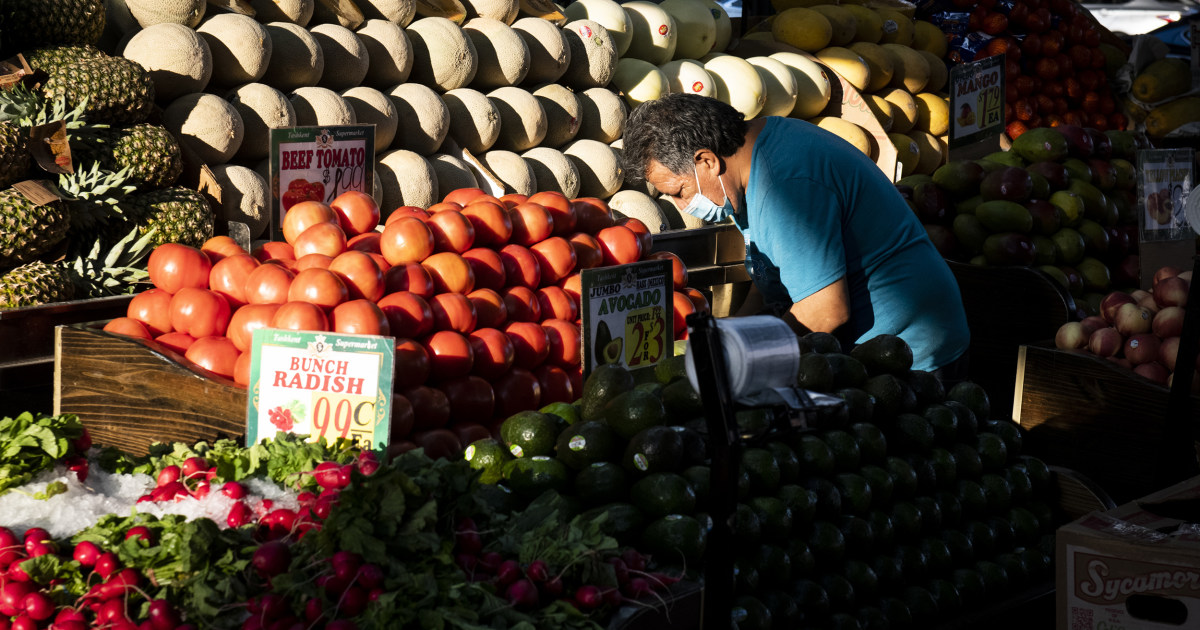
Recent price spikes for food and gas have caught the attention of consumers, as well as analysts — who warn that the pain of higher prices will hit the most vulnerable populations hardest of all.
The reasons behind the increases are myriad but generally can be traced back to one or more consequences of the pandemic: Logjams in the world’s supply chain are one culprit. The United Nations Conference on Trade and Development found that global shipping dropped last year, the first decrease since 2009. “The short-term outlook for maritime trade is grim. Predicting the pandemic’s longer-term impact as well as the timing and scale of the industry’s recovery is fraught with uncertainty,” the organization warned.
Pandemic-related production roadblocks also are contributing to rising prices for food and oil. Agricultural production is dependent on weather, and climate change has contributed to more extreme storms and changing weather patterns that impact planting timelines and crop yields. Food production in the U.S. also relies on a highly mobile army of laborers, whose low pay and crowded working conditions make them uniquely vulnerable to Covid-19 — a combination of circumstances that have crimped production and raised costs for food producers, said Phil Lempert, founder of SupermarketGuru.com. The combination of production bottlenecks and demand spikes have culminated in higher prices, especially for meat, he said.
Consumer Price Index data for the month of January found that the cost of food eaten at home rose 3.7 percent from a year ago — more than double the 1.4 percent year-over-year increase in the prices of all goods included in the C.P.I.
"Food prices are going to continue to increase for probably a good year, year and a half."
Lempert warned that shoppers shouldn’t expect relief any time soon. “I think food prices are going to continue to increase for probably a good year, year and a half,” he predicted. “Our costs are going to go up for food production,” he said.
Another contributor to escalating food costs is the rising price of oil and gasoline. Demand for gasoline bounced back more quickly than oil producers could increase production, leading to an upward march for prices, even with millions of people still not taking business trips or commuting to work.
American oil production had been rising prior to the pandemic. OPEC and its allies had tried — mostly without success — to disrupt this trajectory by increasing output and driving down prices, but Covid-19 delivered the blow to the American petroleum sector that OPEC failed to land. The price of oil plunged last year as nations shut down, with prices for certain futures contracts even turning negative at one point.
“Covid decimated demand. It caused a lot of contraction and production cuts,” said Patrick DeHaan, head of petroleum analysis at GasBuddy.com. “2020 set things back for U.S. oil production by several years.” Today, the number of active oil rigs in the U.S. is roughly 50 percent below its pre-pandemic number, he said.
Over the past two weeks alone, the national average price of gas has jumped by roughly 18 cents, GasBuddy data shows. Some of that recent rise was a short-term spike attributable to the deep freeze that led to production shutdowns across Texas, but DeHaan says even thawing temps won’t mitigate the rise in prices. “There’s been this imbalance in supply and demand as Covid cases have slowed, more businesses have reopened and Americans are filling up more often,” he said.
Advocates warn that higher prices for food and gas will have an outsized effect on the people least able to afford it. A new study found that the $900 billion stimulus package passed by Congress last December lifted 1.6 million people out of poverty. This pales in comparison, though, to the 8 million people who slipped into poverty between June and December of last year.
The poorest American families already spend more than one-third of their income on food: U.S. Department of Agriculture data shows that households in the bottom income quintile spent 36 percent of their income on food in 2019.
“If you think about food prices in the last year, they've gone up substantially,” said Geri Henchy, director of nutrition policy at Food Research & Action Center. “The impact for low-income people is they have limited budgets, which makes it that much harder to buy enough food, and it makes it that much harder to buy healthy food. It’s a disaster,” she said.
Not only are consumers paying more to fill their shopping carts, but rising prices for food affects the food assistance organizations that purchase everything from canned vegetables to peanut butter for distribution. The speed of the price increases means that government nutritional assistance and food programs haven’t had the chance to adjust their models to reflect what recipients receive in aid.
And although national supermarket chains and big-box stores have been largely able to mitigate the worst of the supply chain disruptions that occurred early in the pandemic, the small grocers and corner stores that are the only source of food in many low-income areas don’t have those kinds of resources. These retailers have no choice but to pass higher distribution and delivery costs on to their customers, Henchy said.
“If you think of under-resourced, low-income communities who are reliant on smaller stores, those prices only go up from there,” she said. “The costs are always passed on because those smaller stores don't have economies of scale.”
"gas" - Google News
March 02, 2021 at 05:16AM
https://ift.tt/3r5Za68
The price of food and gas is creeping higher — and will stay that way for a while - NBC News
"gas" - Google News
https://ift.tt/2LxAFvS
https://ift.tt/3fcD5NP
Bagikan Berita Ini















0 Response to "The price of food and gas is creeping higher — and will stay that way for a while - NBC News"
Post a Comment